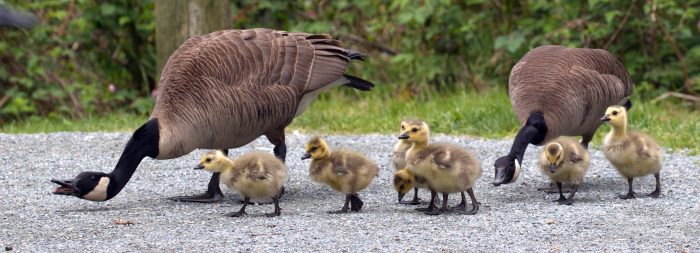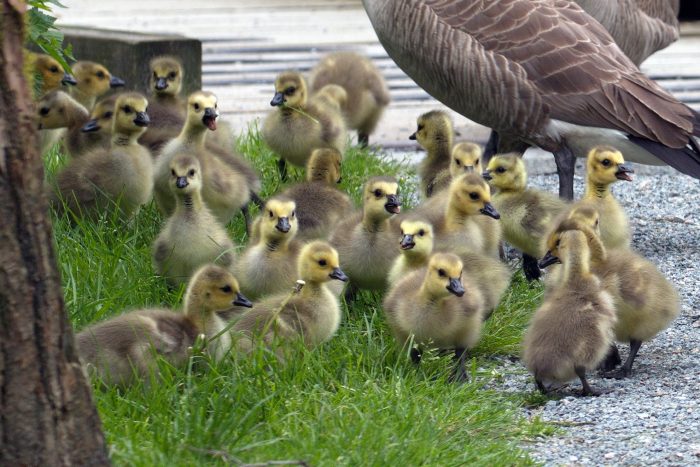Support Us
Since 1979 more than 140,000 animals have been treated by Wildlife Rescue.
Thanks to the support of individuals like you, Wildlife Rescue can provide a lifeline for animals in distress.
Canada Geese mate for life and will return to the same location to nest year after year.
Any approach to controlling geese nesting ideally should be in place before the nest building starts—or quickly thereafter—as it is much more difficult to discourage geese after they have become attached to a site. After nesting has started, moving or scaring geese off a nest is against the law. Canada Geese are protected under the Migratory Bird Convention Act and it is illegal to tamper with a nest, eggs or birds without a permit.

There is much to consider. The lack of available natural nesting sites means these birds have limited spaces to raise their young. Deterring them from your building may mean they choose an even less desirable location. However, in some cases, the rooftop may be dangerous for the goslings or it may be impossible to safely remove the family once the babies have hatched. If this is the case encouraging the family to choose another nesting site may be the best option.
Below is a list of deterrents that may help in diverting a goose pair to a more appropriate nest site. Please note that a combination of deterrents will typically be required to have success in diverting them to another nest site.
Human encroachment has led to a significant reduction in natural habitat for Canada Geese. These birds naturally nest on a slightly elevated area near water. They prefer sites where they have an unobstructed view so they can easily see approaching predators.
The lack of available natural nesting sites has resulted in Canada Geese nesting on rooftops, even in busy urban environments. They typically still nest in the vicinity of water, though families may have to cross busy streets to get there. Green roofs have become particularly attractive to nesting Canada Geese.
Once all the eggs have hatched, the parents will attempt to lead the babies to water. This means the goslings may start jumping off the building to follow the parents. Goslings can usually safely jump as many as two storeys onto the pavement without injuring themselves and up to four storeys onto grass. They will then follow the parents to water. Along the way, they may need assistance to find a safe pathway. Never put yourself in danger, but if you are able to safely help them cross roadways by pushing pedestrian lights, etc this may assist them in safely reaching their destination.
Even if they wanted to, adult geese are unable to carry their goslings. Their beaks are not adapted to hold onto large, squirmy goslings. Instead, goslings instinctively follow their parents wherever they go.

If there are no adult geese, that you can see or hear:
This is likely a gander that is standing by while its mate incubates its eggs. Unless it is injured it is best to leave it where it is. Attempts to capture an uninjured adult goose will be stressful for the goose and unsuccessful for the rescuer! Uninjured geese will typically fly away to escape capture.
Canada Geese are protected under the migratory bird act. It is illegal to disturb or remove a nest without a permit.
“Environment and Climate Change Canada-Canadian Wildlife Service (EC-CWS)’s primary responsibility is the conservation of migratory birds, which includes Canada Geese…
No migratory birds, their eggs or nests may be harmed without a permit.” – Government of Canada
Call your local wildlife rehabilitator for assistance.
You can download a PDF of this FAQ here to print out and share.